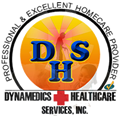 Dynamedics Healthcare Services OT can improve the lives of seniors by:
Dynamedics Healthcare Services OT can improve the lives of seniors by:
- Improving physical functioning in frail older adults, or seniors living with osteoarthritis and macular degeneration.
- Recommending home modifications and adaptive equipment to reduce functional decline and improve safety.
- Encouraging exercises involving functional activities, as well as progressive resistance strength training to improve mobility. Strengthening, balance retraining, and a walking plan are important in reducing the risk of falls and injuries for those over 80 years old.
- Scheduling on-road instruction to improve driving knowledge and skills and enhance on-road safety.
- Using bioptics to improve simulated and on-road driving skills, as well as outdoor mobility skills for older adults with visual impairments.
- Supporting training of life and social skills to help older adults with Alzheimer’s disease, dementia, or other forms of cognitive decline to improve daily interactions.
- Creating a health plan, including physical activity regimen, outdoor activities, cognitive training and social stimulation to reduce the risk of depression and improve community involvement.
Older adults are not the only ones who can benefit from occupational therapy. OT can greatly improve the lives of people living with Parkinson’s, Alzheimer’s, or other chronic diseases, as well as individuals who have survived a sudden health crisis. Here are a few of the ways an OT can help!
- Multiple sclerosis: Inpatient rehabilitation can reduce the severity of symptoms of the disease and improve the ability to complete activities of daily living. Personalized, computerized cognitive training programs at home can also improve attention, memory, information processing, and executive functioning.
- Parkinson’s Disease: Repetitive physical exercises can improve diachronic motor and sensory-perceptual performance skills.
- Post-Stroke Recovery: Specialized therapy plans can help individuals achieve personal recovery goals. An OT will provide instructions that focus on task-related parameters as opposed to specific movements.
